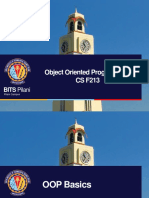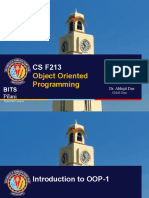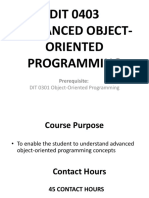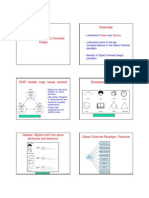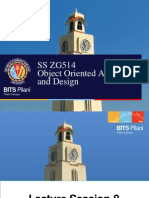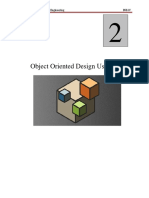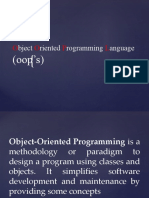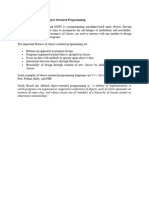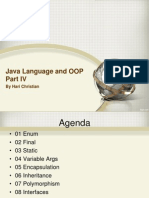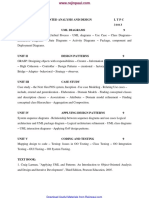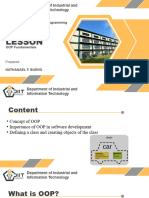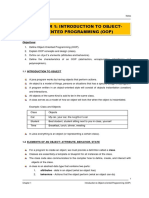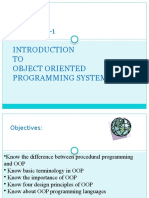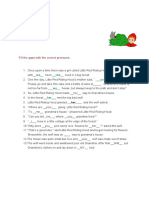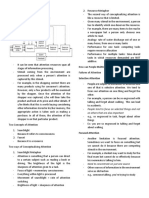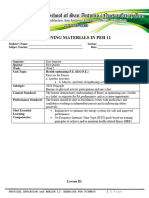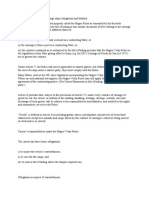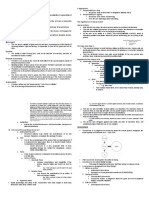0% found this document useful (0 votes)
209 views22 pagesObject Oriented Programming CS F213: BITS Pilani
This document discusses the basic concepts of object-oriented programming including class, object, abstraction, encapsulation, inheritance, and polymorphism. It provides examples of classes like Student and Circle and how objects are instances of classes. Abstraction hides unnecessary details and shows only relevant data. Encapsulation binds data to code that manipulates it. Inheritance allows new classes to extend existing classes so subclasses inherit properties. Polymorphism allows the same method to have different meanings depending on the data type.
Uploaded by
KHUSHBOO KUMARICopyright
© © All Rights Reserved
We take content rights seriously. If you suspect this is your content, claim it here.
Available Formats
Download as PDF, TXT or read online on Scribd
0% found this document useful (0 votes)
209 views22 pagesObject Oriented Programming CS F213: BITS Pilani
This document discusses the basic concepts of object-oriented programming including class, object, abstraction, encapsulation, inheritance, and polymorphism. It provides examples of classes like Student and Circle and how objects are instances of classes. Abstraction hides unnecessary details and shows only relevant data. Encapsulation binds data to code that manipulates it. Inheritance allows new classes to extend existing classes so subclasses inherit properties. Polymorphism allows the same method to have different meanings depending on the data type.
Uploaded by
KHUSHBOO KUMARICopyright
© © All Rights Reserved
We take content rights seriously. If you suspect this is your content, claim it here.
Available Formats
Download as PDF, TXT or read online on Scribd
/ 22
